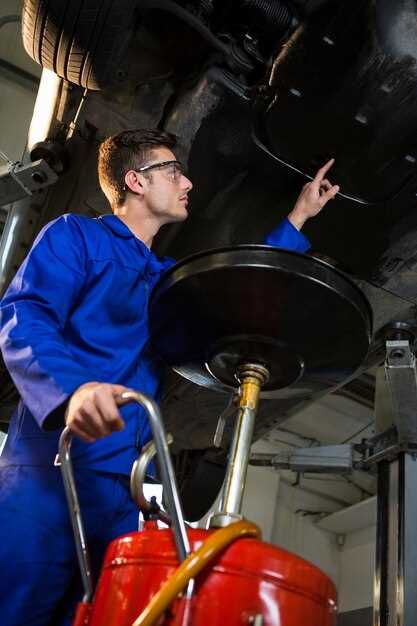
Upgrading your exhaust system can significantly enhance your vehicle’s performance. The exhaust system plays a crucial role in how efficiently your engine operates, affecting both power output and fuel efficiency. By making the right upgrades, you can unlock the full potential of your vehicle while also improving its overall sound and aesthetic appeal.
When considering an exhaust upgrade, it’s essential to understand the various components involved, such as the headers, catalytic converters, and mufflers. Each of these parts contributes to the overall efficiency of the exhaust system. An informed choice about which parts to upgrade can lead to noticeable improvements in horsepower and torque, as well as a more aggressive engine note.
Another vital aspect of upgrading your exhaust system is the impact it has on your vehicle’s emissions. Many aftermarket options are designed to comply with environmental regulations while still providing performance benefits. By upgrading your exhaust, you not only enhance your vehicle’s performance but also contribute to a cleaner environment. This article will explore key tips for a successful upgrade and the benefits that come with it.
Upgrading Your Exhaust System: Key Tips and Benefits

Upgrading your exhaust system can significantly enhance your vehicle’s performance. The primary benefit of a new exhaust system is improved airflow, which directly translates to better engine efficiency. By reducing back pressure, an upgraded system allows the engine to expel exhaust gases more freely, resulting in increased horsepower and torque.
When considering an upgrade, it’s essential to evaluate the materials used in the exhaust system. Stainless steel is a popular choice due to its durability and resistance to corrosion, ensuring longevity and sustained performance. Additionally, mandrel bends in piping can enhance airflow, which is crucial for optimizing engine output.
The choice between a cat-back system and a header-back system is also significant. A cat-back system replaces the exhaust from the catalytic converter to the rear, providing noticeable performance improvements. In contrast, a header-back system involves replacing the entire exhaust system, which maximizes performance benefits but may also come with increased costs.
Sound is another critical aspect when upgrading your exhaust system. Many enthusiasts seek a deeper or more aggressive exhaust note, which can be achieved through various designs. However, it is essential to consider local noise regulations and personal preferences before finalizing your choice.
Installation can be a straightforward process for those with mechanical skills, or you may opt for professional installation to ensure optimal performance. A properly installed exhaust system enhances not only performance but also boosts the vehicle’s aesthetic appeal.
In conclusion, upgrading your exhaust system can lead to significant performance enhancements, improved airflow, and a more desirable sound. By carefully selecting the right components and installation method, you can enjoy the full benefits of your investment.
Choosing the Right Exhaust System for Your Vehicle

Selecting the appropriate exhaust system for your vehicle is crucial for optimizing performance and enhancing the driving experience. An upgrade to your exhaust can yield significant improvements in engine efficiency, sound quality, and overall vehicle aesthetics.
When choosing an exhaust system, consider the type of materials used. Stainless steel is the most durable option, providing resistance to corrosion and longer lifespan compared to mild steel. Additionally, examine the diameter of the exhaust pipes; larger diameters can improve exhaust flow, which is essential for high-performance vehicles.
Another crucial factor is the type of exhaust system configuration. Cat-back systems are popular for their ease of installation and improved sound, while headers can provide even greater performance benefits by reducing backpressure. Each type has its advantages, depending on the desired outcome of the upgrade.
Sound levels are also an important consideration. Some drivers prefer a deep, aggressive tone, while others might want a more subtle, refined sound. Research different brands and types, as each can produce varying sound profiles even with similar specifications.
Additionally, ensure that the chosen exhaust system complies with local emissions regulations. Many aftermarket systems are designed with this in mind, but it’s vital to confirm compatibility to avoid legal issues.
Lastly, consult with experienced mechanics or enthusiasts who understand what works best for your specific vehicle model. Their insights can help guide your decision, ensuring that your exhaust upgrade meets your expectations and enhances your driving experience.
Understanding the Performance Gains from an Exhaust Upgrade
Upgrading your exhaust system can lead to significant performance improvements in your vehicle. A well-designed exhaust system enhances the engine’s efficiency by reducing back pressure and improving gas flow. This results in a more effective expulsion of exhaust gases, allowing your engine to breathe better.
Here are some key performance gains associated with an exhaust upgrade:
- Increased Horsepower: A high-performance exhaust system can boost horsepower by allowing exhaust gases to exit more freely, increasing the engine’s overall power output.
- Improved Torque: Many aftermarket exhaust systems provide a noticeable increase in torque, especially at low and mid-range RPMs, enhancing acceleration and responsiveness.
- Better Fuel Efficiency: By optimizing exhaust flow and minimizing restrictions, an upgrade can lead to improved fuel efficiency, making your engine work smarter, not harder.
- Enhanced Sound: Upgrading your exhaust system can provide a more aggressive and sporty sound, which many enthusiasts find appealing, reflecting their vehicle’s performance capabilities.
- Improved Aesthetics: A new exhaust system can enhance the visual appeal of your vehicle, contributing to its overall performance image.
In summary, upgrading your exhaust system not only enhances performance through increased horsepower and torque but also contributes to better fuel efficiency and an appealing sound. Investing in a quality exhaust upgrade can help you unlock your vehicle’s full potential while enhancing your driving experience.
Installation Tips for a Successful Exhaust System Replacement
Installing a new exhaust system can significantly enhance your vehicle’s performance and efficiency. Here are some critical tips to ensure a successful installation.
First, gather all necessary tools and materials before beginning the installation. A complete toolkit typically includes wrenches, sockets, a ratchet, a jack, and jack stands. Ensure you have the correct exhaust system components that are compatible with your vehicle model for optimal performance.
Next, ensure the vehicle is securely elevated and stable. Use jack stands to support the car if you are working underneath it. This safety measure prevents potential accidents while installing the exhaust system.
Prior to removing the old exhaust system, examine the existing setup. Take note of how each component is arranged and any specific mounting points. This information will assist in correctly positioning the new exhaust system for proper fitment.
Carefully remove the old exhaust system, ensuring that all brackets and hangers are detached. Use penetrating oil on rusted or difficult bolts to simplify removal. Once the old system is off, clean the exhaust manifold and any connection points to achieve a tight seal with the new components.
When positioning the new exhaust system, loosely connect all parts first. This allows for adjustments to be made in alignment before tightening. Ensure that the exhaust is routed properly to prevent any contact with the chassis or suspension components, which could impact performance and cause noise issues.
After confirming the alignment, tighten all bolts and clamps according to the manufacturer’s specifications. A properly secured exhaust system minimizes leaks and enhances overall performance.
Finally, start the vehicle and listen for any unusual sounds, indicating potential leaks or misalignments. Check all connections again after a few days of driving to ensure everything remains secure, as components may settle into place over time.
Following these installation tips will help ensure that the replacement exhaust system enhances your vehicle’s performance while providing a reliable and efficient driving experience.